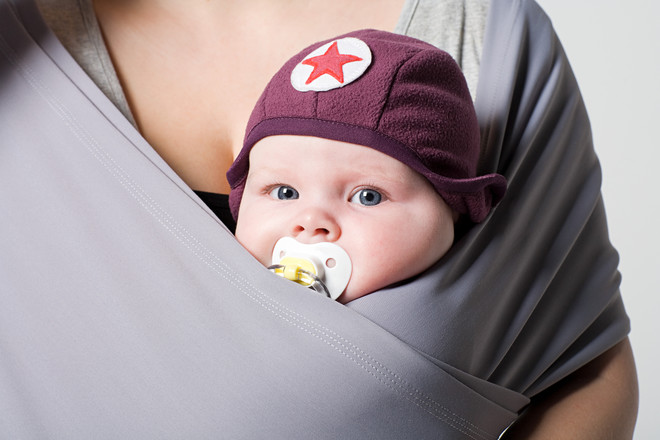Especially this applies to the unusual for the eldergeneration of things: pampers, car seats, slings ... As a result, slings become in the public consciousness not convenient and safe carrying, which they are, but a kind of fairy-tale subject that can both make happy and hurt. We debunk slingshots together with the expert of the Prognosis Project, a member of the Union of Professional Maternity Support (CPSU) Ekaterina Sokoltseva. Photo: Getty Images
Photo: Getty Images
Myth 1. A child who is taught to wear in a sling will always ask for help.
The human baby, unlikeindependent almost from birth, calves and foals need to be carried in arms for the first months of life. This is not a whim or a fancy, but a vital necessity. By denying the baby mother's warmth, we thereby impoverish its development. Scientific research has long proven that "tame" children develop faster, adapt to the world around them faster, and the work of all systems is established faster. From the gastrointestinal tract (yes, this is about colic!) to the vestibular apparatus. An important bonus for the mother: carrying the child reduces the risk of postpartum depression, lactation is established (and increases) faster. After the end of the "tame" period, the baby, who has sat in his mother's arms for a long time, is sure that she is always there. He feels her support and actively explores the world!
Myth 2. Sling excludes the stroller.
 Photo:Getty ImagesFanaticism has never led to anything good. Babywearing is not in conflict with "stroller riding". Parents can choose any means of transporting a baby depending on the circumstances. Agree, in a house without an elevator, you can do without a sling only through mother's heroism and weightlifting exercises. A visit to a clinic that does not have "parking" for strollers also becomes easier with a sling. And on trips, a sling can do a great job! Slings are just a carrier, not a way of thinking. Use what is convenient for you and your baby right now!
Photo:Getty ImagesFanaticism has never led to anything good. Babywearing is not in conflict with "stroller riding". Parents can choose any means of transporting a baby depending on the circumstances. Agree, in a house without an elevator, you can do without a sling only through mother's heroism and weightlifting exercises. A visit to a clinic that does not have "parking" for strollers also becomes easier with a sling. And on trips, a sling can do a great job! Slings are just a carrier, not a way of thinking. Use what is convenient for you and your baby right now!
Myth 3. While the child does not sit, it should be worn only horizontally.
 Photo:Getty ImagesAs reasonable parents, we do not want to harm our precious child. The vertical carrying in Russian traditions seems dangerous to us. But the horizontal carrying position has many disadvantages: an asymmetric load on the baby's spine and muscles, difficulty controlling the baby's breathing, a shifted center of gravity for the mother - and all this together means that carrying a baby in a "cradle" is not so convenient! Studies have shown that vertical carrying meets all the parameters of safe placement of a child. In a sling, the baby is pulled in along the entire length of the spine, from the neck to the tailbone, the pelvis is not overloaded, the hips are physiologically spread apart. Even premature babies are carried vertically, this is the basis of the famous "kangaroo method", which has shown excellent results in nursing hasty babies. And if you look closely at an ordinary baby, from about two weeks of life we will see that he insists on being carried vertically "in a column", colic in this position passes easier, the world is better seen, and it is more comfortable to carry! It is also useful to know:
Photo:Getty ImagesAs reasonable parents, we do not want to harm our precious child. The vertical carrying in Russian traditions seems dangerous to us. But the horizontal carrying position has many disadvantages: an asymmetric load on the baby's spine and muscles, difficulty controlling the baby's breathing, a shifted center of gravity for the mother - and all this together means that carrying a baby in a "cradle" is not so convenient! Studies have shown that vertical carrying meets all the parameters of safe placement of a child. In a sling, the baby is pulled in along the entire length of the spine, from the neck to the tailbone, the pelvis is not overloaded, the hips are physiologically spread apart. Even premature babies are carried vertically, this is the basis of the famous "kangaroo method", which has shown excellent results in nursing hasty babies. And if you look closely at an ordinary baby, from about two weeks of life we will see that he insists on being carried vertically "in a column", colic in this position passes easier, the world is better seen, and it is more comfortable to carry! It is also useful to know:









